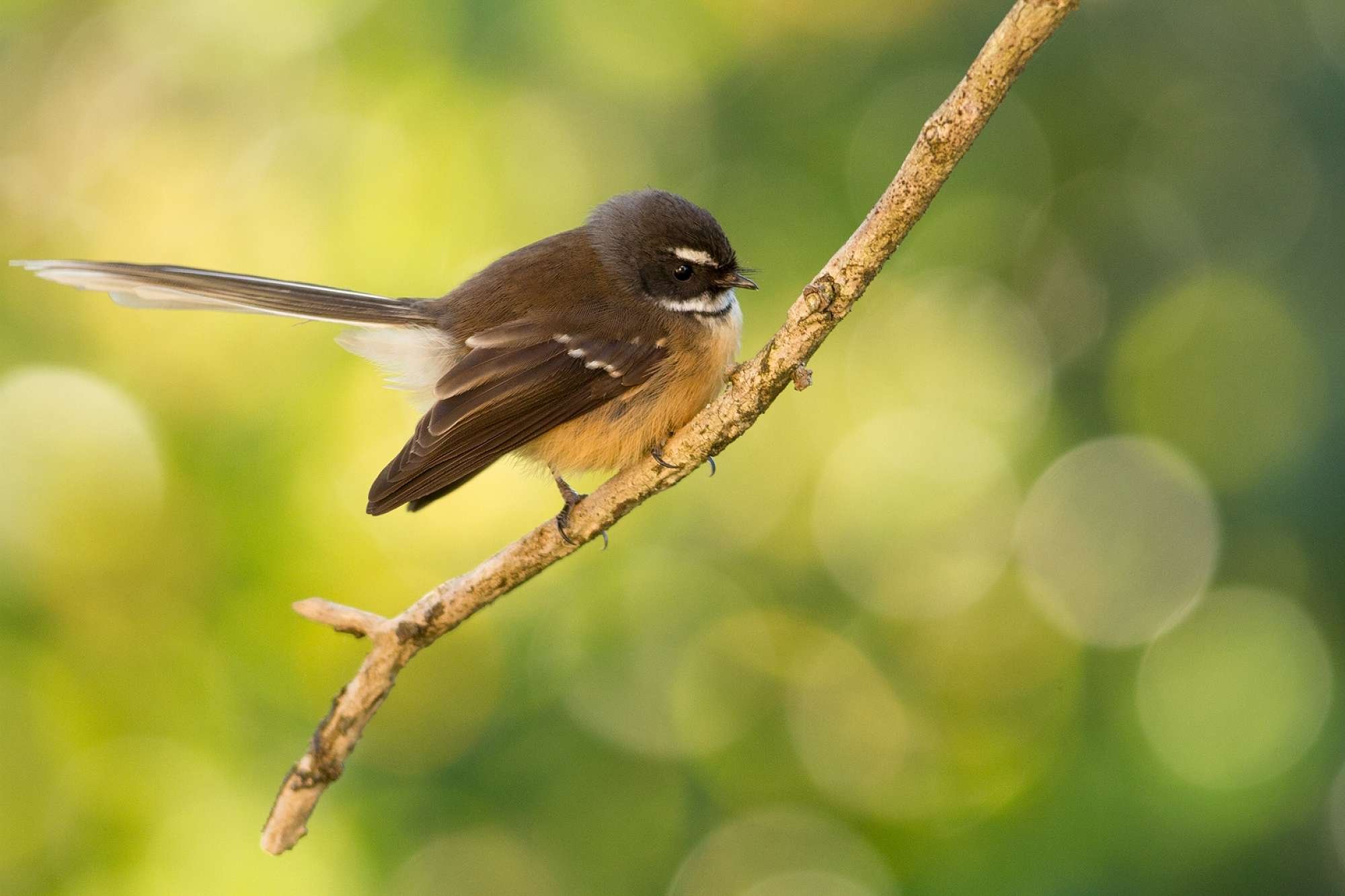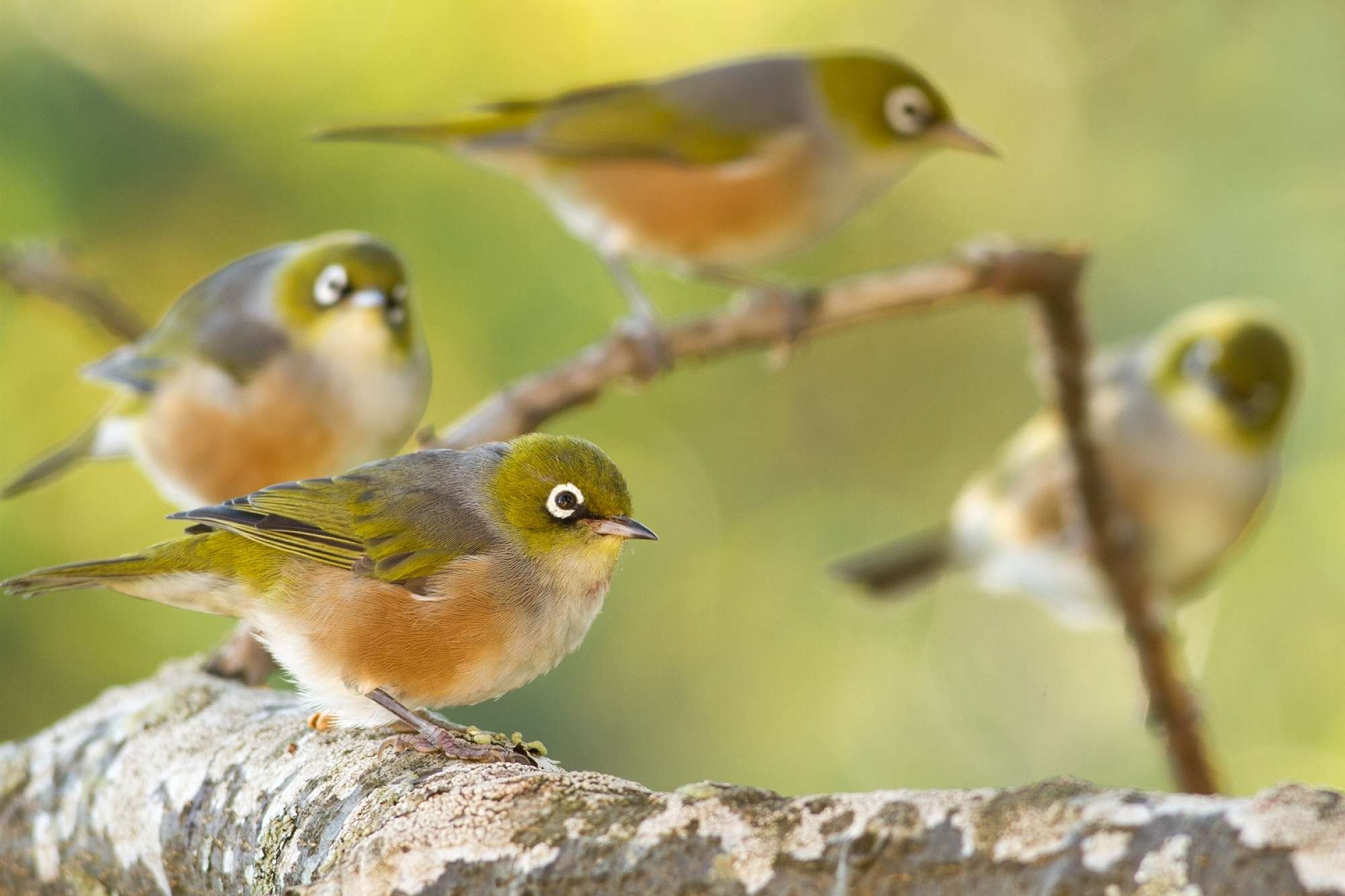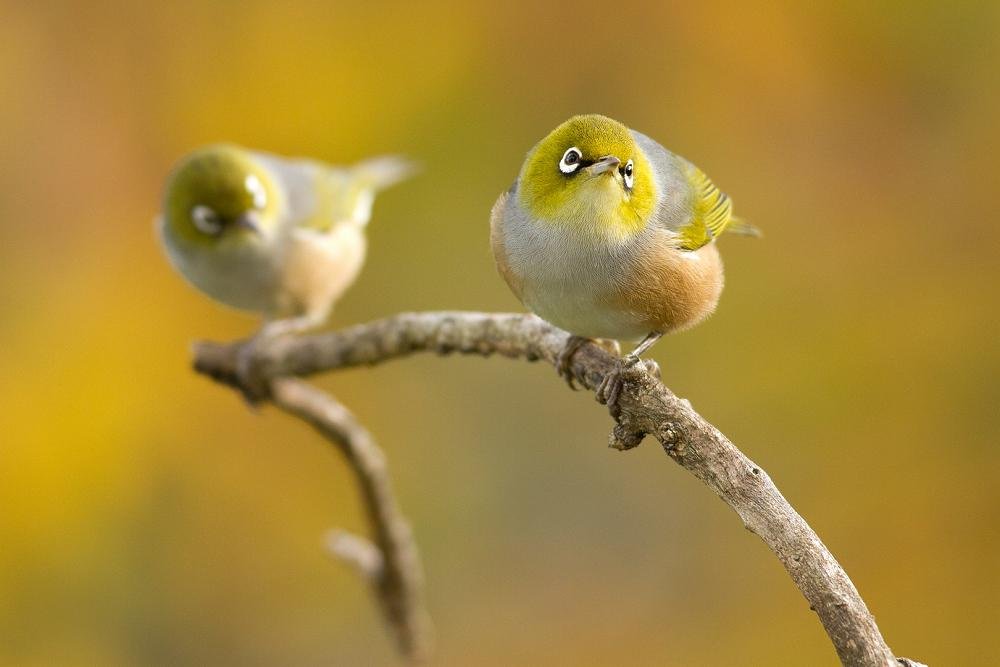Backyard Bird Photography
Wild Dunedin — Apr 9, 2020
When I’m feeling stir crazy and start dreaming of local birding haunts like Orokonui Ecosanctuary or Hawksbury Lagoon, I remind myself that some of my favourite shots have been taken at home – out my bedroom window, in fact.
Pīwakawaka (fantail) photographed by Paul Sorrell from his bedroom window while in lockdown.
Dunedin photographer and writer Paul Sorrell writes there are many advantages to photographing wildlife at home.
First, you will be familiar with your own property and aware of the birds that regularly visit your garden. Second, you will have the freedom to modify your environment to create the best angles for photography and make the most of the available light.
Riroriro (grey warbler) in Kowhai tree. Image by: Paul Sorrell
You may already have a place where birds gather. For most people, this will be a feeder where fat, syrup, nuts and seeds are put out to draw a variety of small birds including introduced species like finches. At this time of year, our native honeyeaters – tūī, bellbirds and silvereyes – will be attracted by sugar water to supplement their natural diet.
A group of tauhou (silvereyes).
Image by: Paul Sorrell
Using these elements to photograph birds can be very simple – as basic as a couple of stakes in the ground, one holding your feeder and the other with an attractive natural perch attached. Put them close together so that the hungry bird will alight on the perch (where you can take its picture) before moving onto the feeder.
Of course, you can put your setup wherever you like. Outside a garden shed, for example, where you can lie in wait with your camera (ideally equipped with at least a 300mm lens) at the ready. I’m lucky to have a mature kowhai tree right outside my bedroom, meaning I can sit inside in comfort and shoot through the raised sash windows!
Tauhou (silvereye). Image by: Paul Sorrell
Good light and interesting backgrounds will be key to getting bird images with strong eye appeal. These are other elements that you can control when shooting at home, by simply moving your set-up and position until you get it right.
Shooting out my bedroom window means that I don’t have that luxury, but I can still turn the situation to advantage.
My fantail was shot against a screen of leaves backed by the low evening sun, creating pinpoints of light that show up in the image as attractively diffused highlights. And the silvereye pair was photographed late last autumn, with the same foliage now transformed into an orange–red blur.
Remember that the further the background is from your subject, the creamier that lovely blur will be.
Have a go and see what you come up with!
Paul in 2021 contributed to our 7x7 Wild Talk events. Hear what he has to say about whether photography is art.
7x7: Paul Sorrell - The Video Factory




